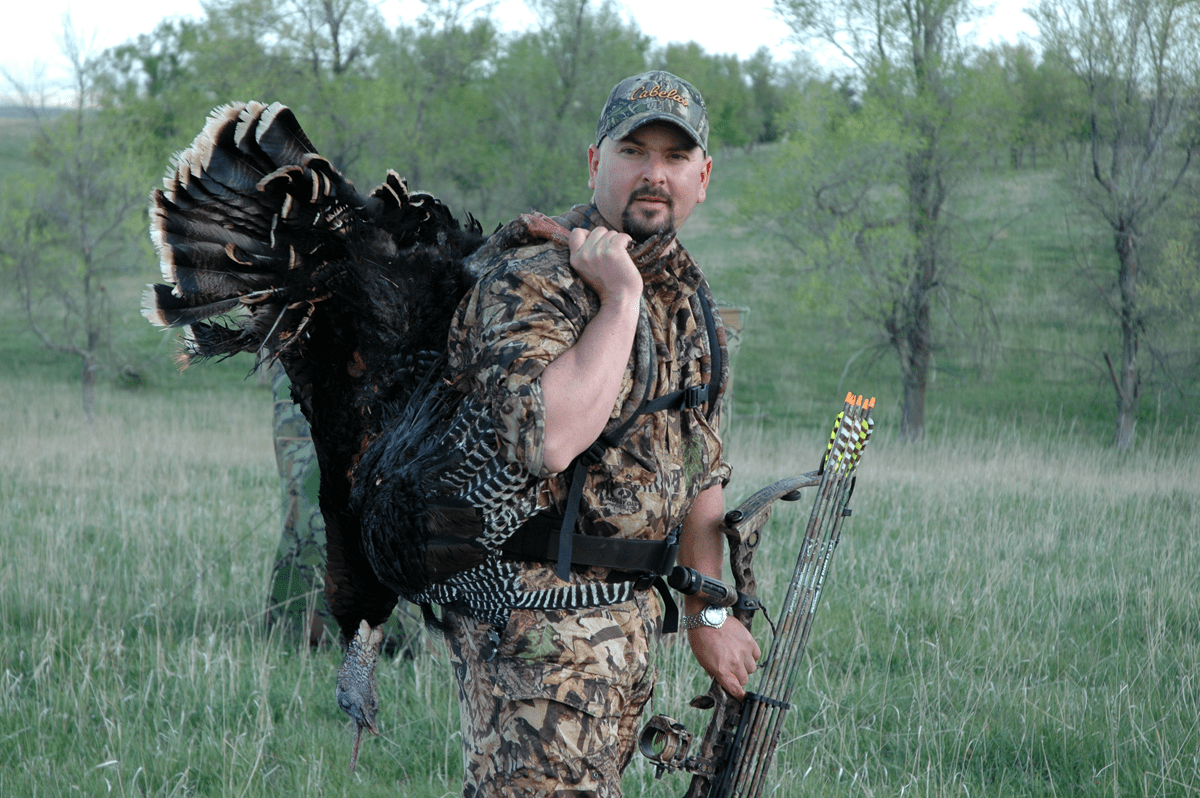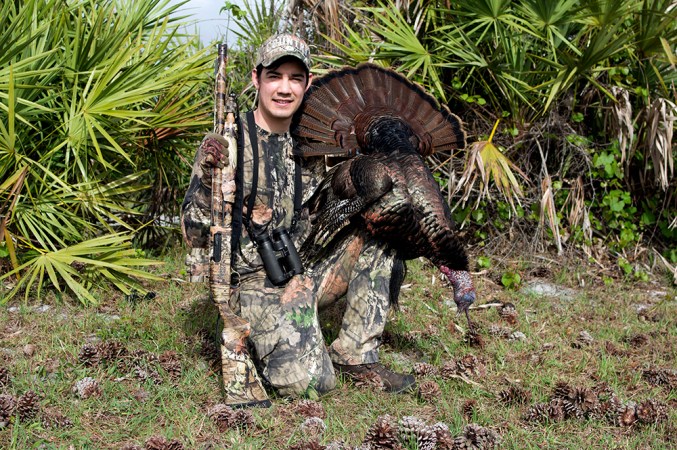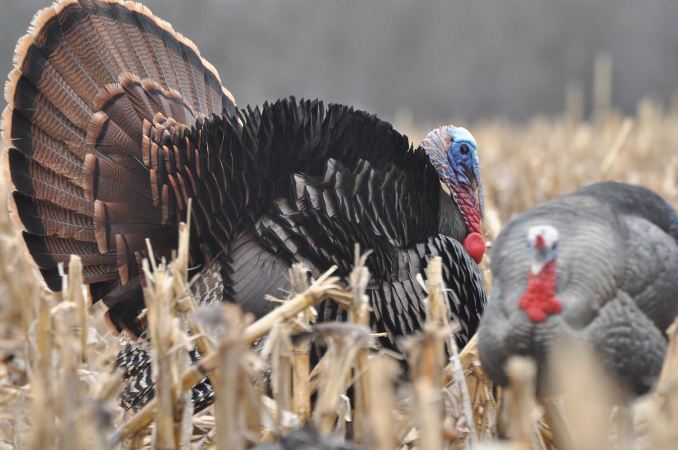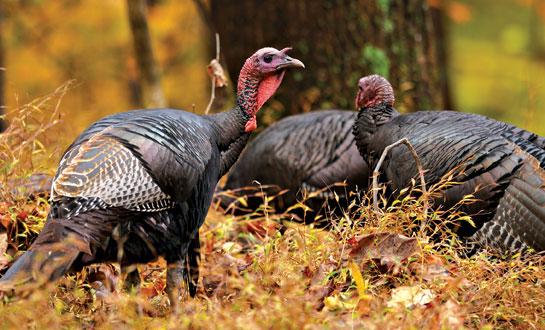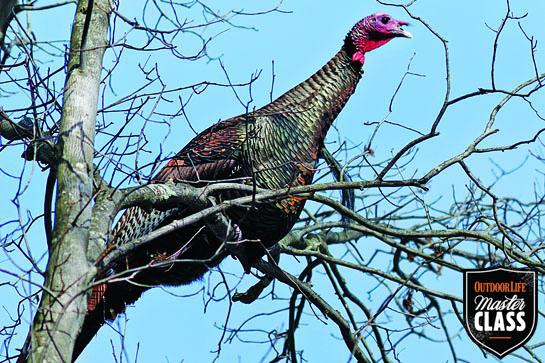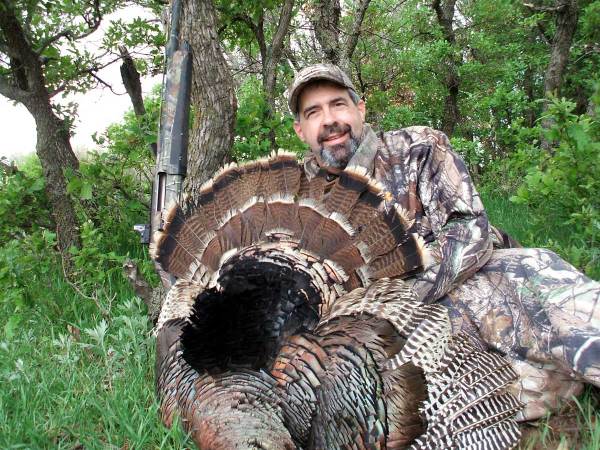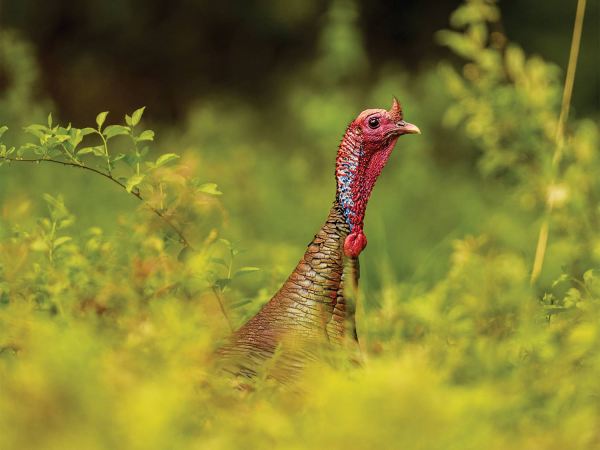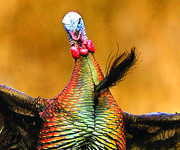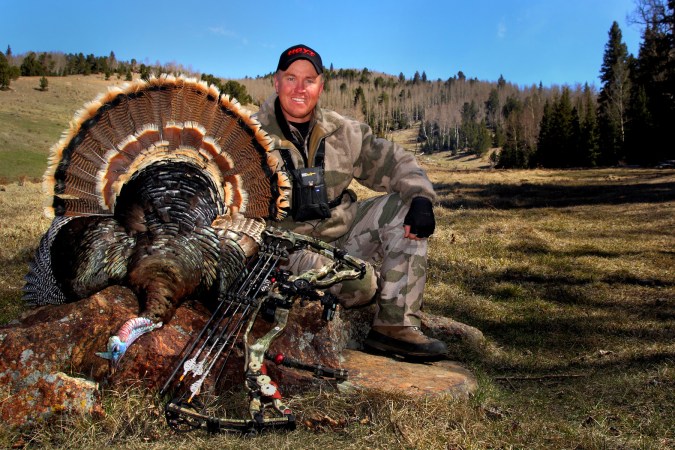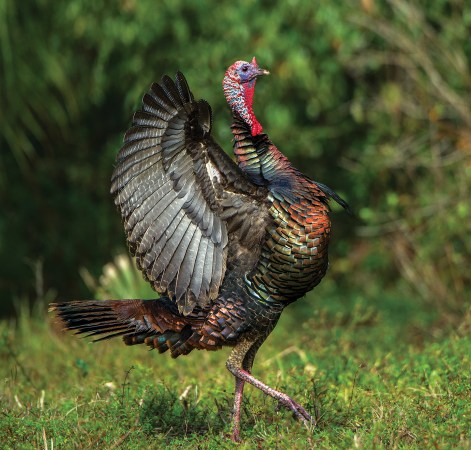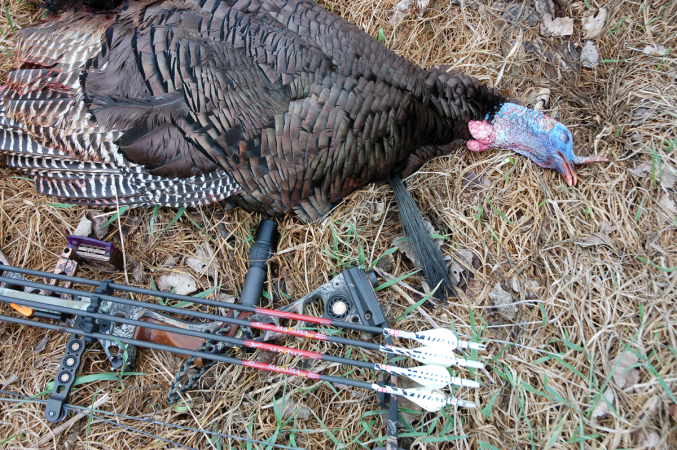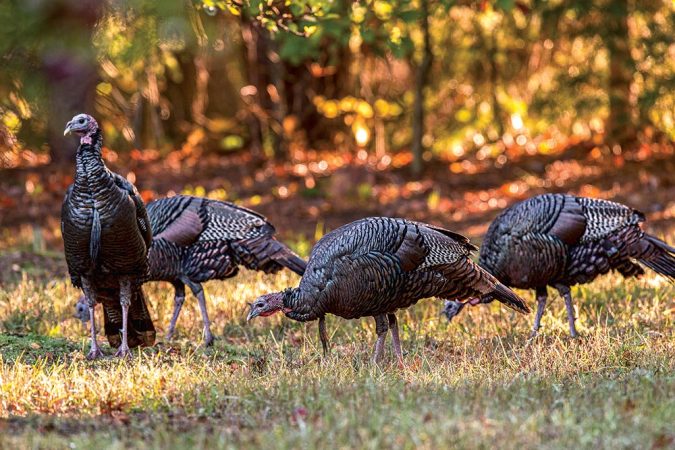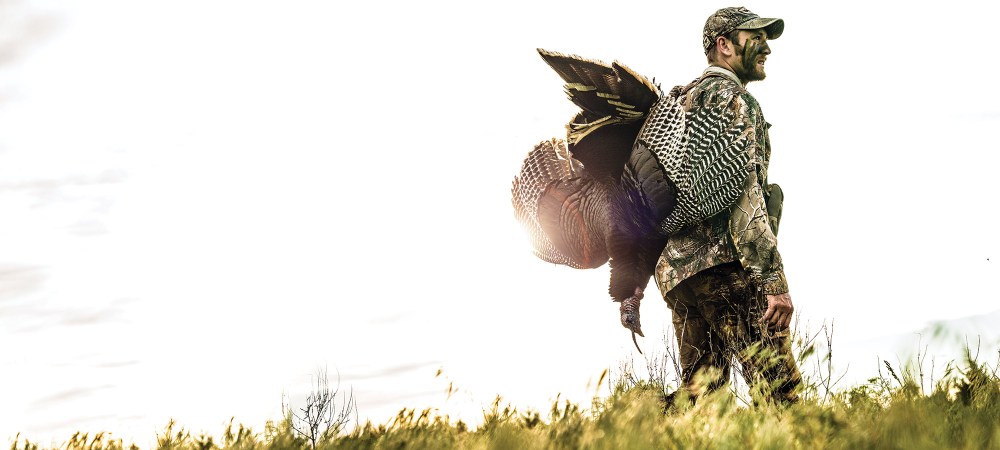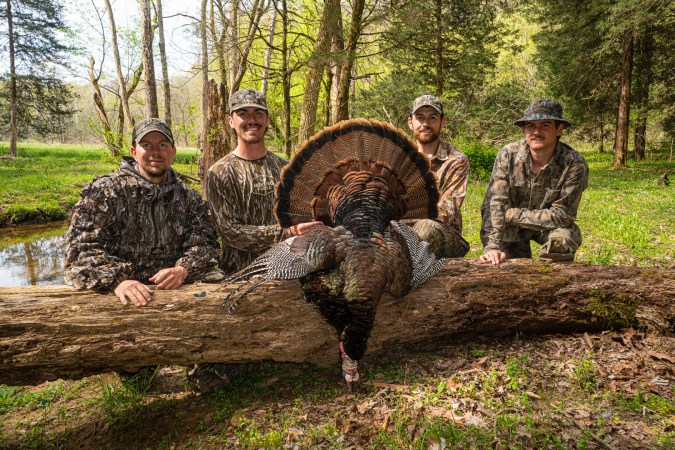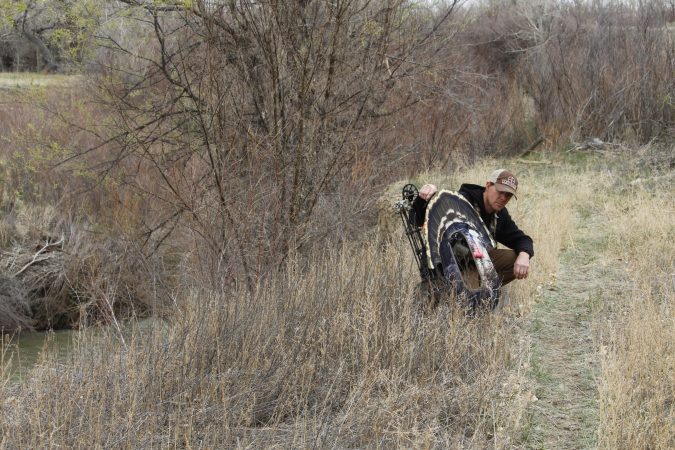Looking to take a spring turkey with your bow? Forget hunting the roost.
It might seem obvious, even easy, but of course it’s not—especially when your effective range hovers around 30 yards, and, you’ll likely have to pull off erecting your portable blind within earshot of several turkeys. In many areas of the country, a turkey’s daily travel pattern offers remarkably consistent ambush points, and point-blank shots, for hunters toting bows. When I finally figured this out, I began bagging spring toms consistently with my bow.
A case in point is a recent South Dakota hunt. It all began with a long drive over from Minnesota and a few short hours of shuteye, but before I knew it my hunting bud Tom and I were erecting our Primos Double Bull blind in darkness. Our chosen location was a harvested field that had reportedly been holding birds regularly the past few mornings. (Gotta love solid “insider” intel from a good local friend.)
I’d won the coin flip so Tom was doing the calling. Shortly after shooting light we could hear a few distant yelps and soon Tom was firing up his favorite slate in response. Just a few seductive yelps from Tom was all it took before two sleek hens suddenly appeared on the scene, dragging a fine Merriam’s tom in full strut—complete with his big, beautiful, ivory-tipped fan. The unexpected, jaw-dropping sight instantly woke both of us from our hazy, sleep-deprived morning stupor. By the time the chip-shot 10-yard shot struck home, barely 20 minutes had passed since first light. The two of us had driven some seven hours the previous evening to arrive at our camping spot well after midnight, and now, not even an hour into our hunt, we’d savored the sweet taste of success.
If that recent spring experience taught me anything, it’s that hunting predictable turkey travel patterns is one of the very best ways to ambush a spring gobbler.
Unlike deer, turkeys are much less predictable while traveling from Point A to Point B. A turkey, for instance, will just as soon walk straight across an open field than hug the edge cover around it—like most wary deer certainly would.
Yet turkeys can probably be counted on more than deer when it comes to arriving during a predictable time slot at a favorite, specific location along their daily travel routes. In certain areas, they are truly creatures of habit.
The wide-open, largely treeless South Dakota habitat seems to produce unusually consistent turkey travel patterns. The remote, unpressured terrain is one factor, and so is the fact that the state’s turkeys seem to roost, strut, and feed in the same spots, month to month and even year over year—maybe as a result of that low hunting pressure.
Conversely, central Pennsylvania’s Matt Morrett, a World Turkey Calling Champion several times over, knows that hunting turkey travel routes in his thickly wooded state can be a crap shoot. He uses other keys to ambush them consistently.
“Honestly, I don’t think a turkey is predictable,” he says. “Turkeys where I live cover a big area, and don’t necessarily roost in the same area each night. What we do know is that they’re going to roost at night, and they’re going to go to water, and use some type of dusting area. What their unpredictability has taught me is to consider the phase of the season. It’s kind of mountainous around here, and it greens up low first, in the foothills. In March and April, the turkeys are down low, and they get higher as the season progresses.
“We call it ‘spring green up’—there’s more nutrition down there early, the turkeys are eating roots and tubers. They’ll eat just about anything that time of year. But the food source that we really pray for is when the grasshoppers start coming out. That’s just a wild guess, but turkeys seem to love them.”
Morrett, who hunts several states each spring, agrees that turkeys in Kansas, Northern Missouri, and Iowa seem easier to pattern, but there are some little-known secrets that work wherever they are found.
“I think one of the biggest keys we forget about is water—we think about it out West while hunting elk, but turkeys need water too. Usually, they’ll water right away in the morning, and they seem to head to water two or three times per day.”
Morrett said water is especially key in states with more arid climes, such as Texas. But drought conditions anywhere make water critical.
“Hunting near water is just a great strategy, especially when the gobbling action slows down—usually after about 10 a.m. or so. Then you’ve got a trump card that most hunters don’t play.”
